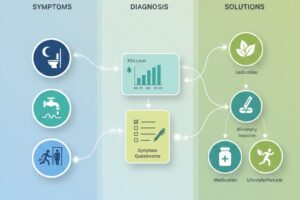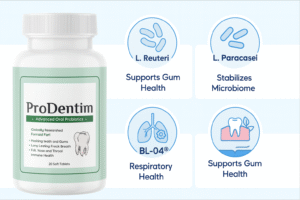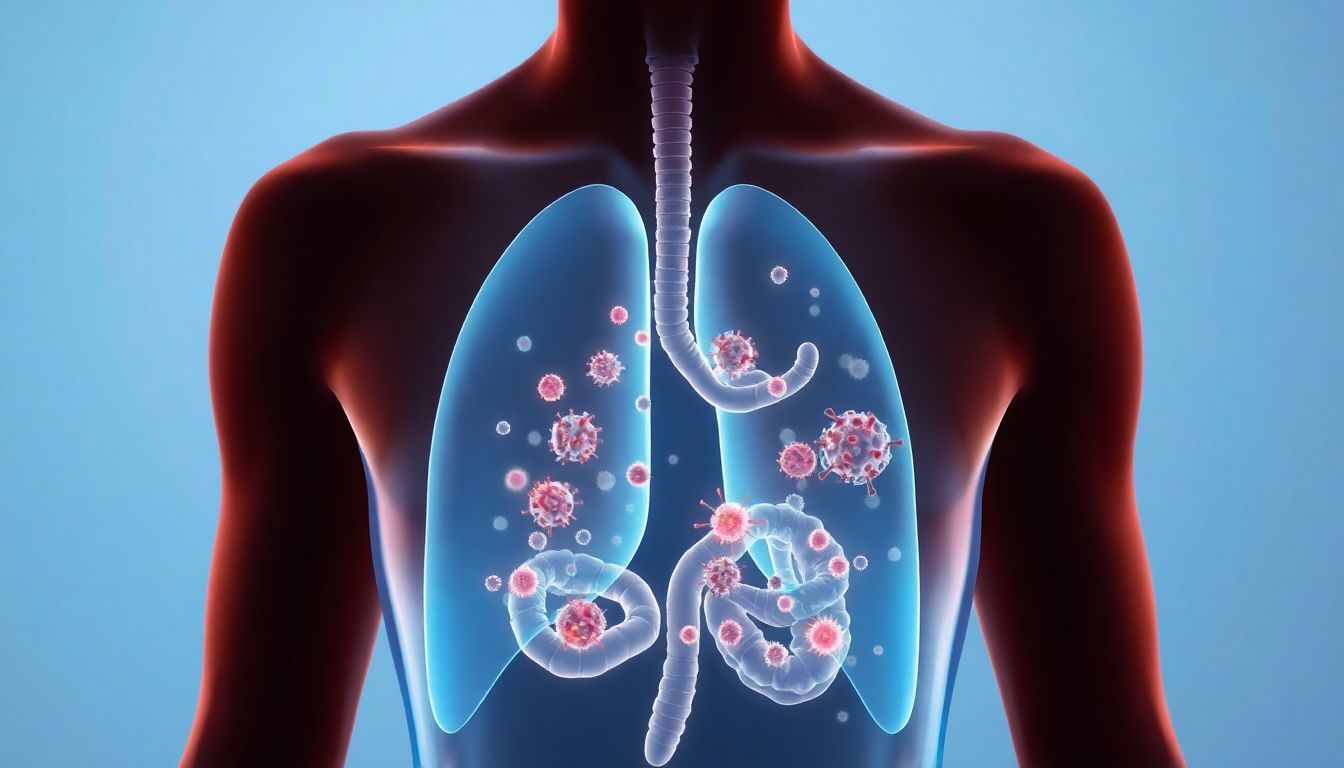What if the key to easier breathing wasn’t in your lungs, but in your gut?
Groundbreaking research has revealed a powerful communication network between your digestive system and your respiratory system – the gut-lung axis. This connection explains why gut problems often coincide with breathing issues, and why healing your digestion can be one of the most effective strategies for restoring lung health.
Your gut microbiome – the trillions of bacteria living in your intestines – acts as a command center for your entire immune system. When this ecosystem is balanced, it helps keep lung inflammation in check. When it’s out of balance, it can trigger or worsen respiratory conditions.
The Conversation Inside You: How Your Gut Talks to Your Lungs
Think of your gut and lungs as two separate kingdoms with a constant diplomatic exchange. They communicate through several vital channels:
- The Immune System Highway: About 70-80% of your immune cells reside in your gut. These cells “learn” from your gut bacteria and then travel throughout your body, including to your lungs, influencing how they respond to threats.
- The Chemical Messenger Network: Your gut bacteria produce short-chain fatty acids (SCFAs) like butyrate. These compounds travel through your bloodstream and help calm inflammation in distant organs, including your lungs.
- The Vagus Nerve Bridge: This major nerve, which we explored in The Vagus Nerve & Your Lungs, carries signals directly from your gut to your brain and lungs, influencing everything from mucus production to cough reflexes.
When this communication system works properly, your body maintains a state of balanced immunity. But when gut health fails, the consequences reach directly into your airways.
When Gut Health Fails: How Dysbiosis Wreaks Havoc on Your Lungs
Dysbiosis occurs when harmful bacteria outnumber beneficial ones in your gut. This imbalance creates a cascade of problems that directly affect your respiratory system:
- Inflamed Airways: An unhealthy gut microbiome triggers systemic inflammation. This inflammatory state doesn’t just stay in your gut—it travels to your lungs, contributing to conditions like asthma and COPD.
- Weakened Defenses: Good gut bacteria train your immune system to fight real threats. Without this proper training, your lungs become more vulnerable to infections, viruses, and environmental triggers.
- Leaky Gut, Leaky Lungs: Intestinal permeability (“leaky gut”) allows toxins and undigested food particles to enter your bloodstream. This triggers widespread immune activation that often manifests as respiratory symptoms.
This explains why studies show that people with gut issues are significantly more likely to develop respiratory problems, and why addressing gut health can lead to remarkable improvements in breathing.
Now that you understand the connection, let’s explore how you can use this knowledge to your advantage.
5 Steps to Heal Your Gut and Transform Your Lung Health
The good news is that your gut microbiome can change quickly—often within days or weeks of implementing the right strategies. Here’s your action plan.
1. Feed Your Microbial Allies (Prebiotics)
Prebiotics are specialized fibers that feed your beneficial gut bacteria. Think of them as fertilizer for your microbial garden.
- Best Sources: Garlic, onions, leeks, asparagus, bananas, oats, apples, flaxseeds, and dandelion greens.
- Simple Start: Add one serving of these foods to your daily meals. Try sliced banana on oatmeal or adding garlic and onions to your cooking.
These foods work synergistically with the anti-inflammatory strategies we discussed in Lung Inflammation: Is Your Immune System Accidentally Attacking Your Lungs?.
2. Add Beneficial Bacteria (Probiotics)
Probiotics are live beneficial bacteria that can help restore balance to your gut ecosystem.
- Fermented Foods: Yogurt, kefir, sauerkraut, kimchi, miso, and kombucha.
- Supplement Strategy: Look for reputable probiotic supplements containing Lactobacillus and Bifidobacterium strains, which have been specifically studied for immune and respiratory benefits.
3. Eliminate Gut Irritants
Certain foods and substances can damage your gut lining and promote dysbiosis.
- Common Triggers: Processed foods, refined sugars, artificial sweeteners, excessive alcohol, and for some people, gluten and conventional dairy.
- Action Step: Try eliminating processed foods and added sugars for two weeks and notice how your breathing and digestion improve.
4. Support Digestion with Mindful Eating
How you eat is just as important as what you eat when it comes to gut health.
- Chew Thoroughly: Digestion begins in your mouth. Aim to chew each bite 20-30 times.
- Eat in a Relaxed State: Stress shuts down digestion. Take a few deep breaths before meals and avoid eating while stressed or rushed.
- Don’t Overeat: Large meals can overwhelm your digestive system. Try smaller, more frequent meals if you experience bloating or reflux.
5. Consider Gut-Healing Nutrients
Specific nutrients can help repair the gut lining and reduce inflammation.
- L-Glutamine: An amino acid that serves as fuel for your intestinal cells.
- Zinc Carnosine: Helps repair the gut lining and reduce inflammation.
- Omega-3 Fatty Acids: Powerful anti-inflammatories that support both gut and lung health, as highlighted in The Lungs’ Best Friends: Top 5 Anti-Inflammatory Foods.
Key Takeaways to Remember
- Your gut and lungs are in constant communication through the gut-lung axis
- An unhealthy gut microbiome can trigger lung inflammation and weaken respiratory defenses
- Healing your gut can directly improve your breathing and reduce respiratory symptoms
- Prebiotics and probiotics are powerful tools for rebalancing your microbiome
- Consistency with gut-healthy habits creates lasting improvements in lung function
The Bottom Line: Your Gut is Your Lung’s Best Ally
The gut-lung axis represents a paradigm shift in how we approach respiratory health. Instead of viewing lung problems in isolation, we now understand they’re deeply connected to our digestive wellness.
By nourishing your gut microbiome with the right foods, reducing irritants, and supporting digestion, you’re not just improving your gut health—you’re building a foundation for easier, deeper breathing. Your gut bacteria are active partners in your respiratory defense system, and when you take care of them, they take care of your lungs.











